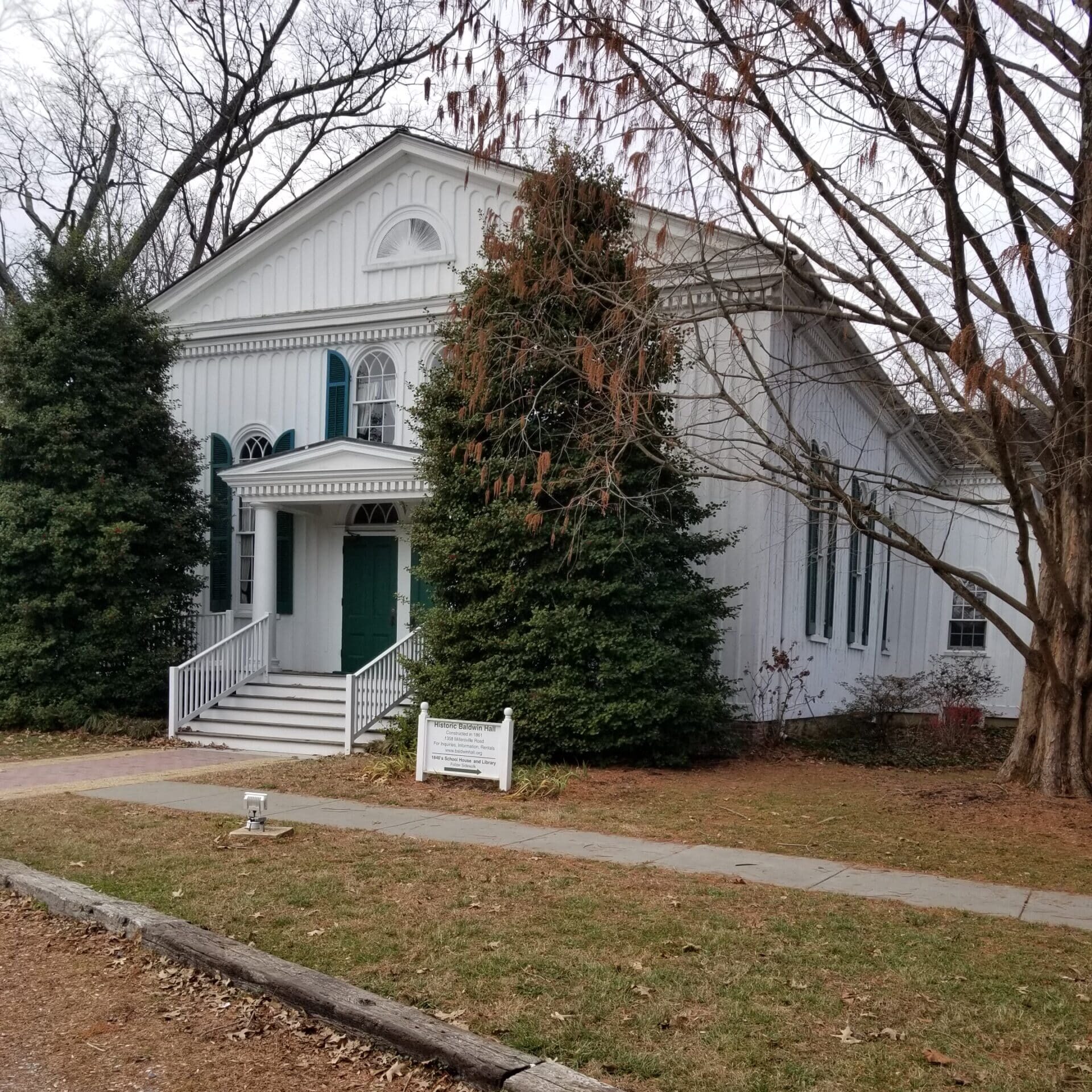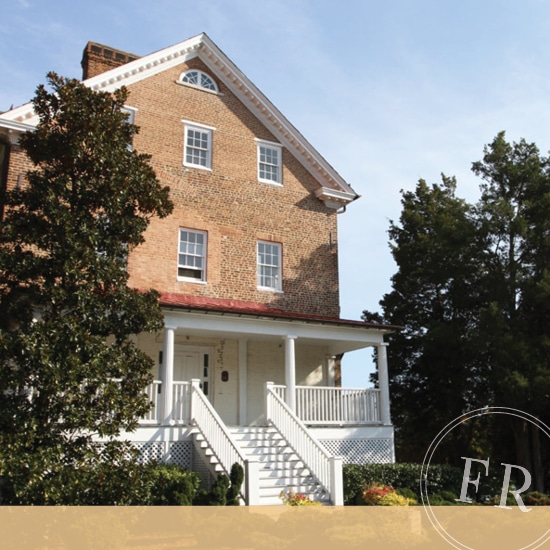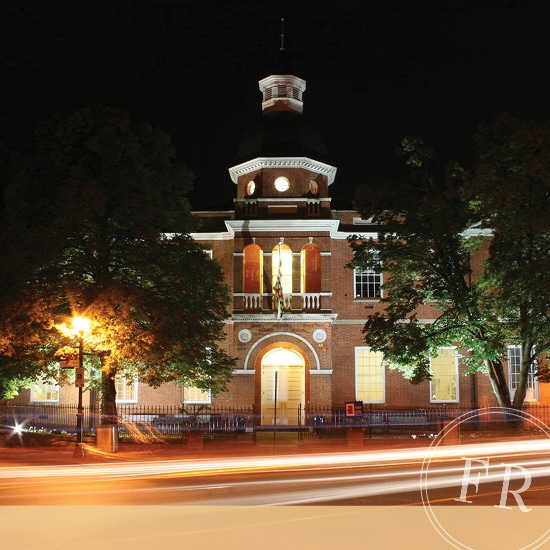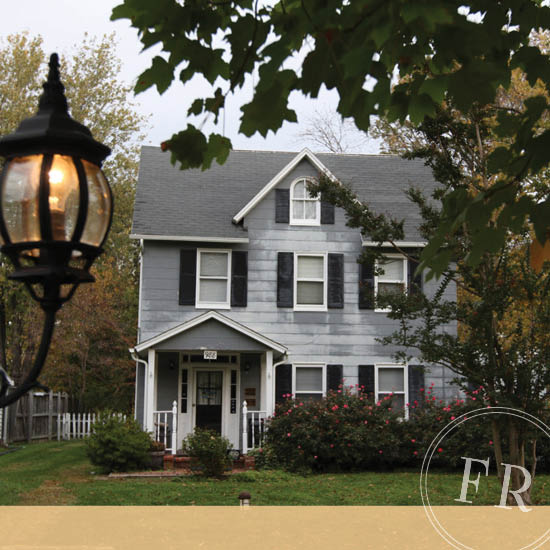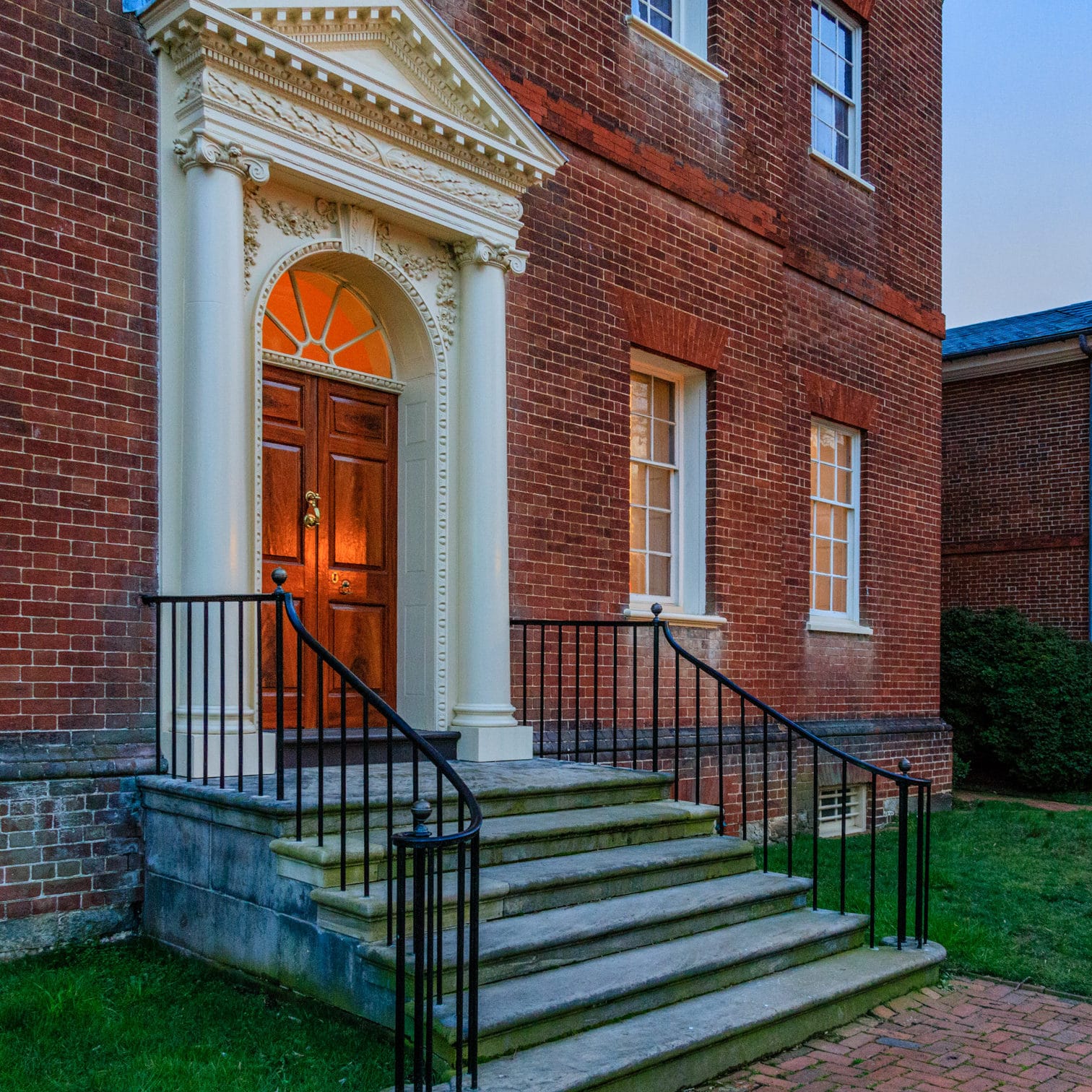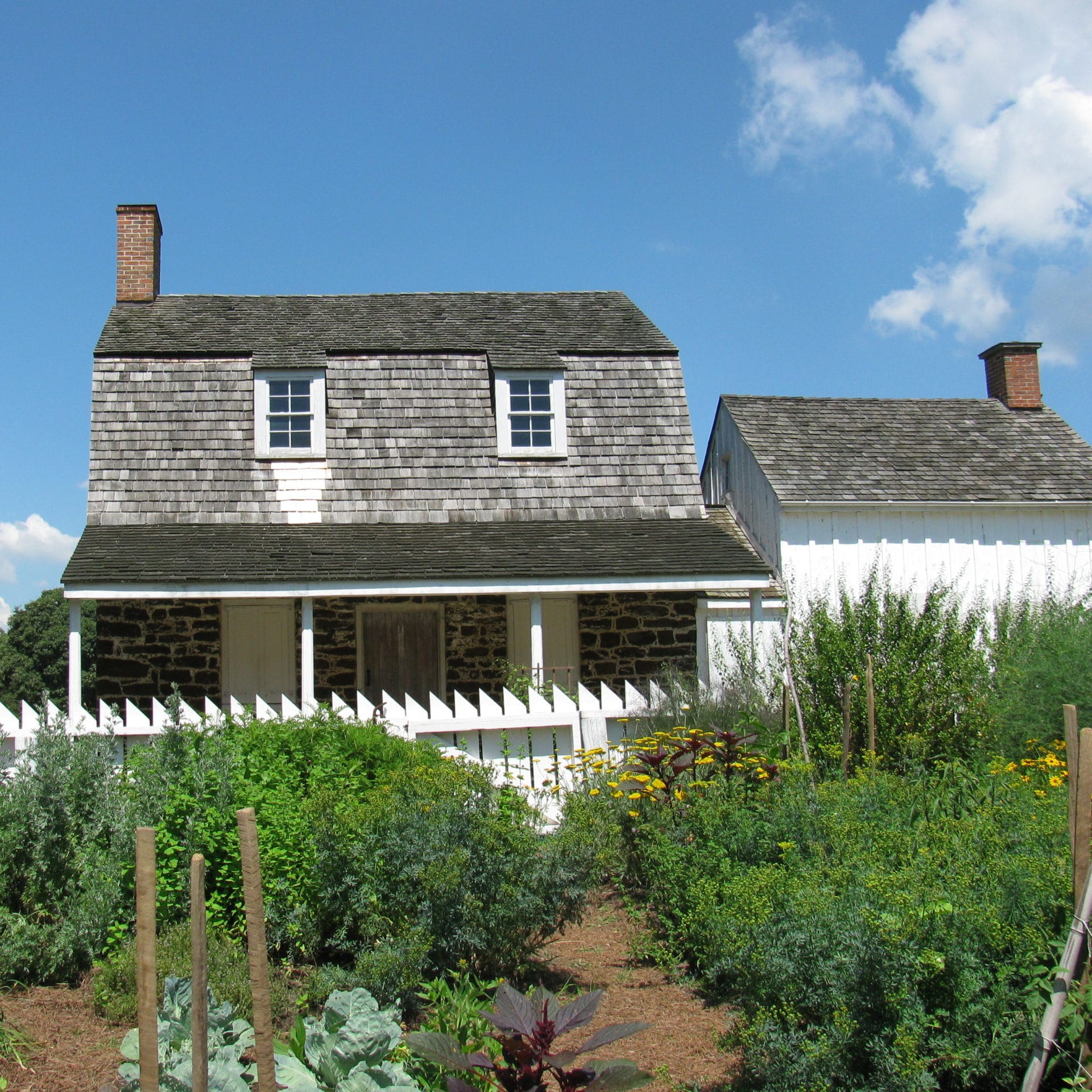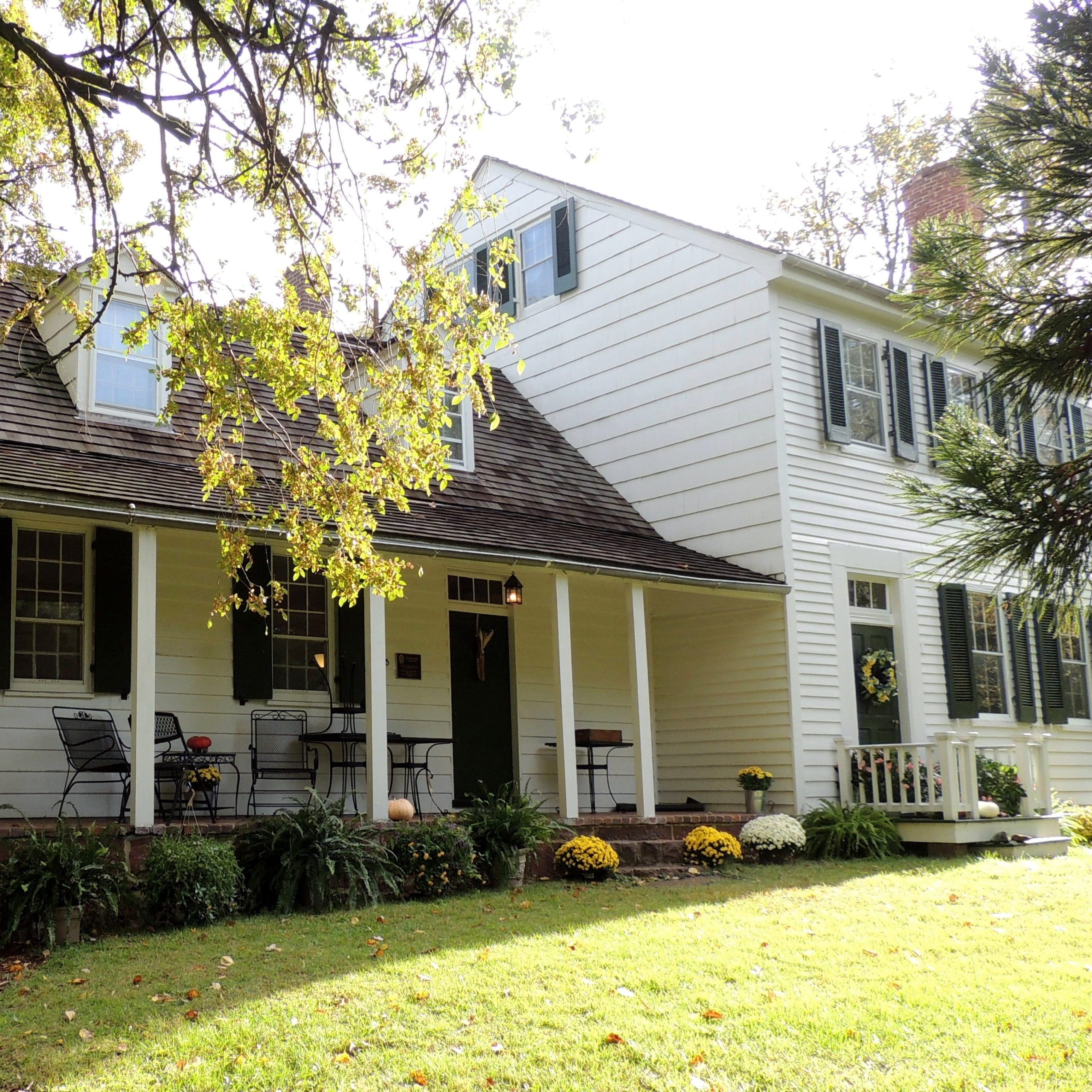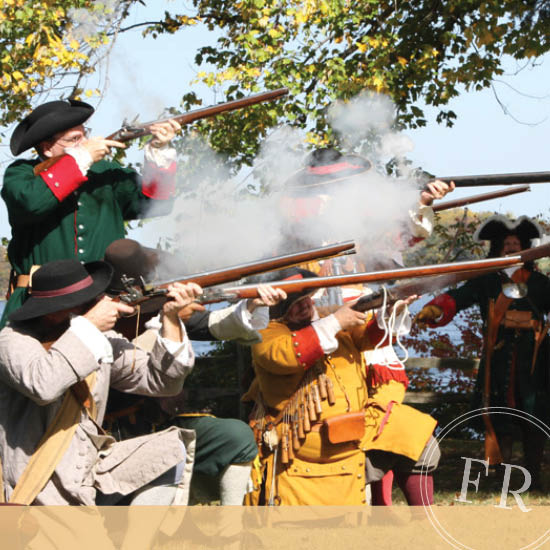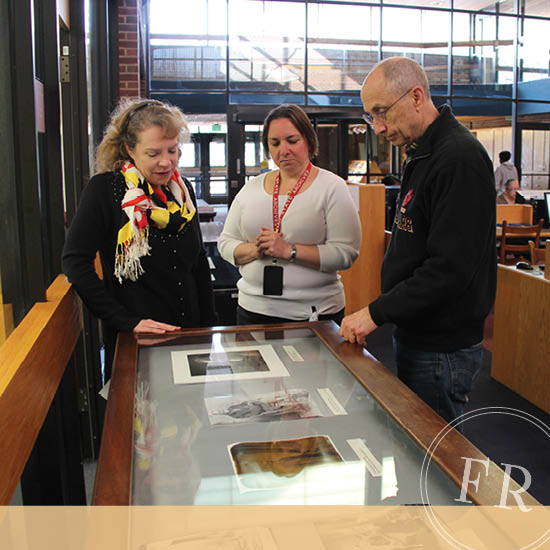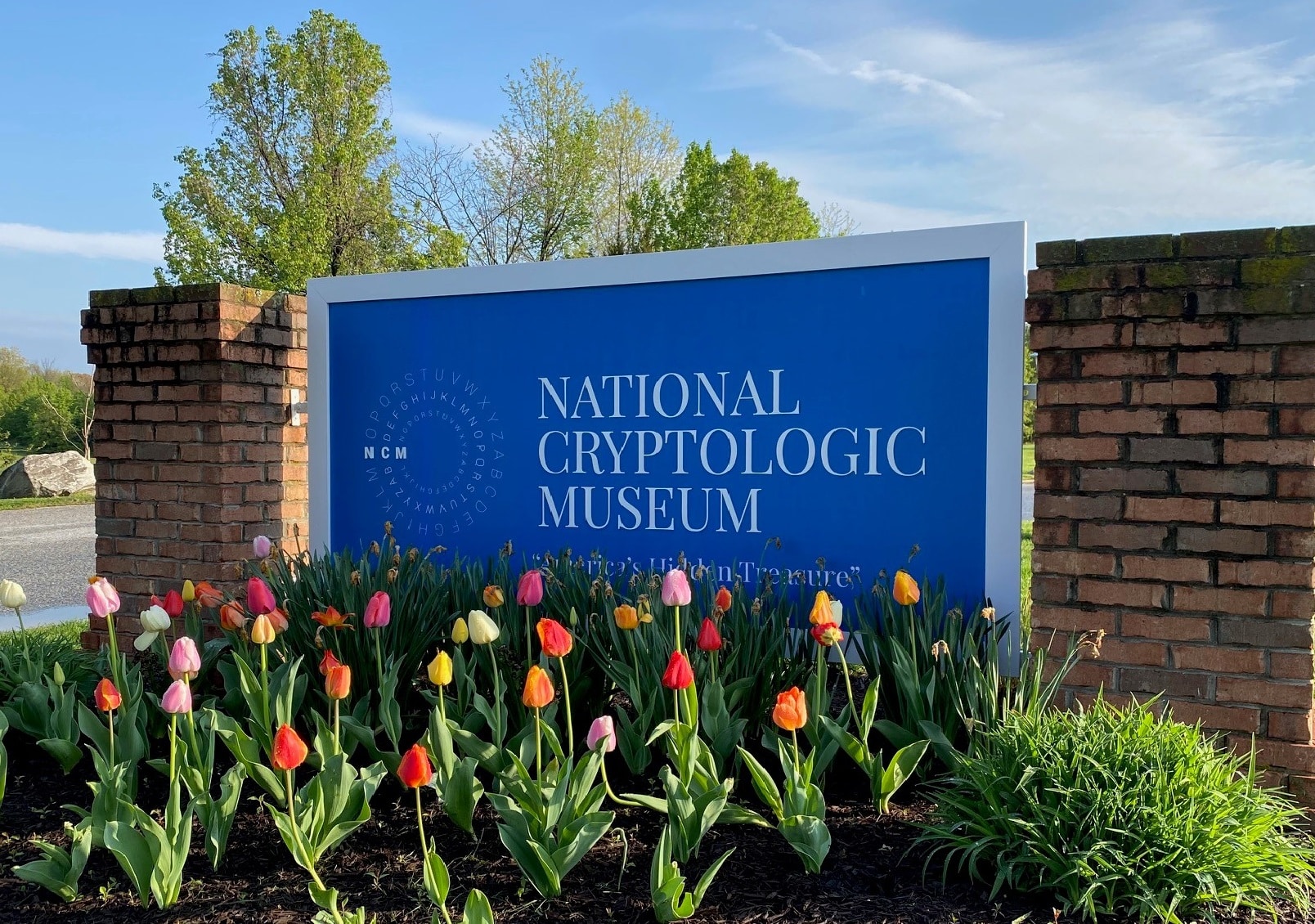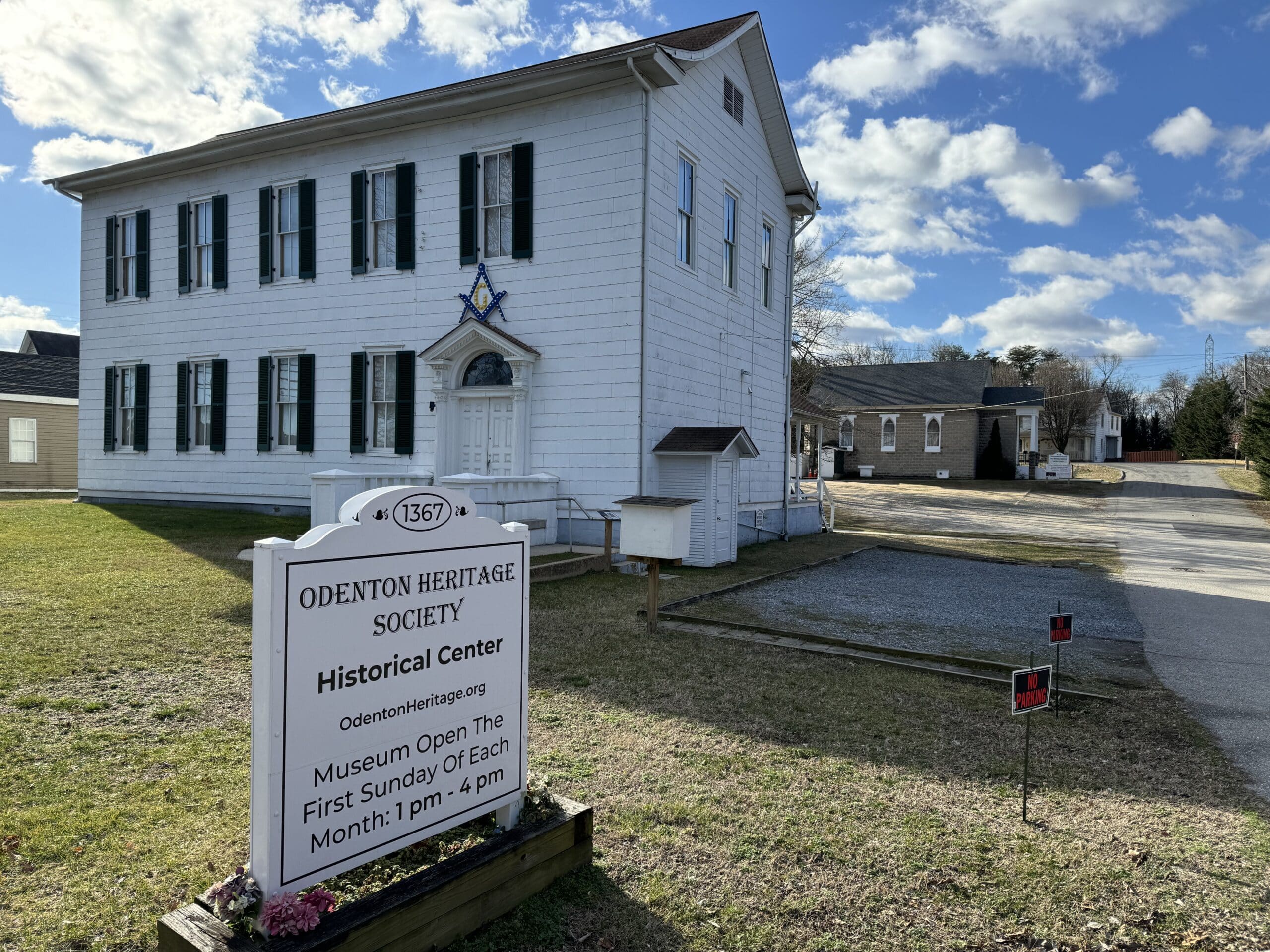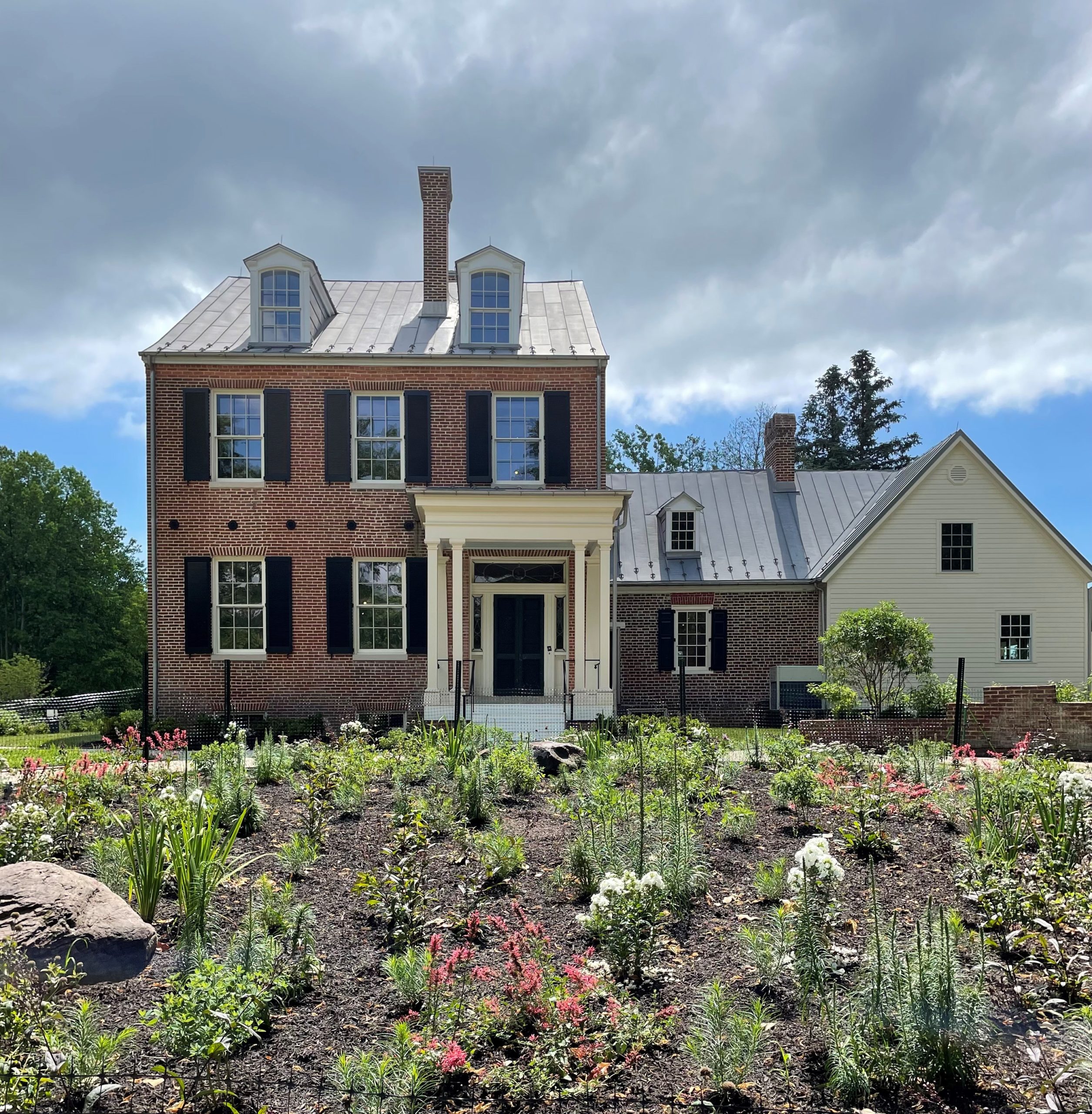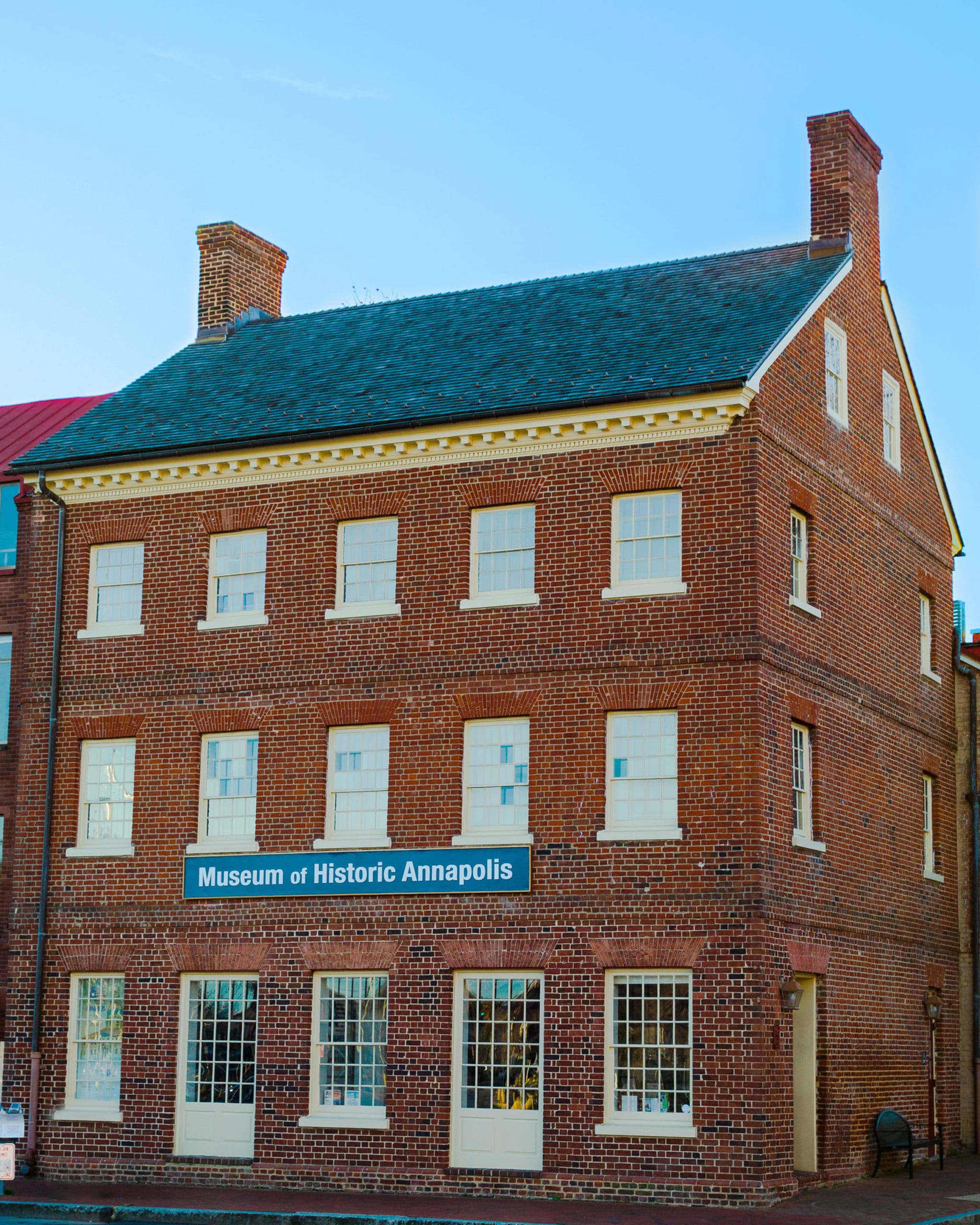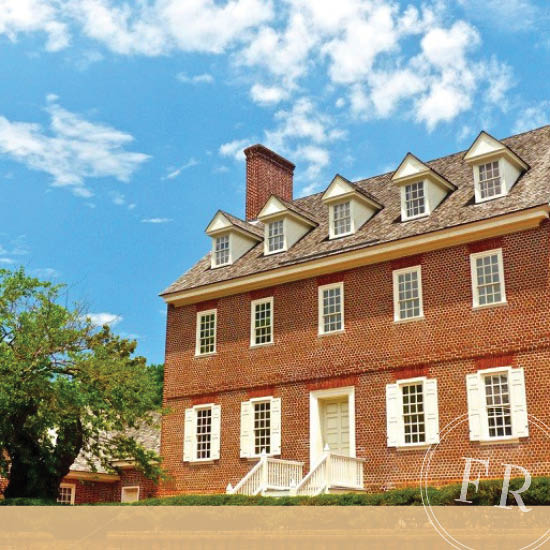“[Annapolis] did not begin with hurriedly built huts, scattered over the surface, that were transformed later into conformable dwellings and arranged with order and symmetry; but from the very first her English colonists seem to have conceived a delightful ideal in the planning of their new city.”
– Henry Randall (1869-1905), Architect, Annapolis Native
Early Annapolis
Annapolis began with the arrival in the winter of 1649/50 of non-conforming Protestants who, having left Virginia seeking religious freedom, settled on the Severn River near present-day Annapolis. Those associated with the early settlement included Thomas Todd and Richard Acton, who took up land on the neck between the waters later known as the Severn River and Spa Creek. Twenty years after the founding of Providence, the legislature designated Acton’s land across the Severn as an official port of entry. Following the appointment of the third royal governor, Francis Nicholson, in 1694, the General Assembly voted to move the colony’s capital from St. Mary’s City to what was then called Ann Arundell Town.
-
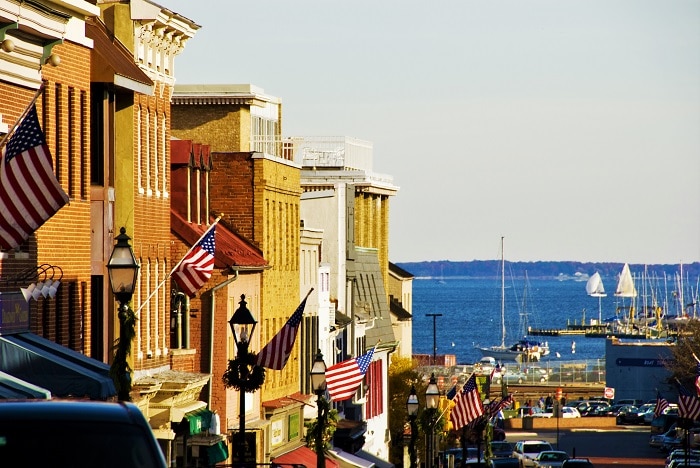
-
Preservation 2 1
The end of the Annapolis “golden age”—a period from which much of the city’s most notable architecture dates—came in part because of disruptions in trade caused by the American Revolution and in part from Baltimore’s assuming the role of Maryland’s principal port during the Revolutionary War. Several factors contributed to this shift, including Baltimore’s deep water harbor, its access to the wheat-growing regions of the upper Bay, and its location on the fall line that provided water power for the area’s mills. Society soon followed industry up to Baltimore, so that in 1804, Sir Augustus Foster could write of Annapolis that “The best society used to be found here.”
Preservation of the City
Although the rise of Baltimore siphoned trade and elite society away from Annapolis, it had the undeniable effect of essentially freezing the city within its eighteenth-century time frame. Historians maintain that Annapolis residents from its “golden age” would have little difficulty recognizing the city that stands today. Since the end of the “golden age,” many of the town’s historic buildings have changed hands, been altered, added to, or, in some cases, restored to their original appearance. Despite these changes, Annapolis’ historic fabric remains remarkably intact, thanks in large part to historic preservation efforts that began as early as the 1880s. Today, the city’s historic core is a National Historic Landmark District protected by city ordinances and overseen by the Historic Preservation Commission. With such initiatives in place, residents and visitors alike have the opportunity to experience the past in its historic context. Self-guided or guided tours are available, leading you past houses once filled with 18th-century music, dancing, and talk of tobacco, politics, and revolution.
-
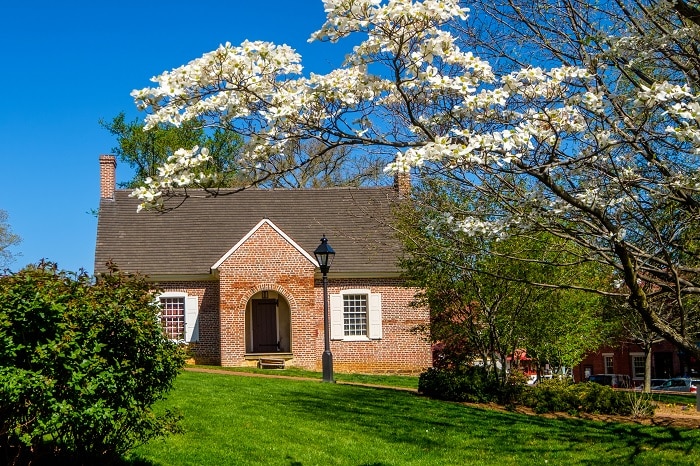
-
Preservation 6 1
Today’s preservation efforts include limits on the height and bulk of new construction and sensitive guidelines for alterations to historic buildings. Organizations such as the Historic Annapolis Foundation also engage today’s property owners in the preservation of the city. Aside from managing, preserving, and restoring a number of historic building in town, Historic Annapolis’ historic marker program gives residents the opportunity to identify their homes as architecturally significant if they embody the characteristics of their predominant architectural style. Spanning almost 40 years and incorporating over 240 properties, these octagonal markers have become icons within the city. Plaque colors signify the time period of a building’s construction, making a visitor’s stroll through town a history lesson in itself:
- Red: Georgian Architecture (1715-1800)
- Bronze: Georgian Buildings of National Importance (1730-1800)
- Blue: Federal Architecture (1784-1840)
- Green: Greek Revival Architecture (1820-1860)
- Purple: Victorian Era Architecture (1869-1901)
- Gray: 19th-20th Century Annapolis Vernacular Architecture (1837-1921)
- Yellow: 20th-Century Distinctive Architecture (1901-1938)
Historic Annapolis also offers tours at their properties around town, including the William Paca House and Garden and Hogshead, and interactive exhibits at the Historic Annapolis Museum and Waterfront Warehouse.
-
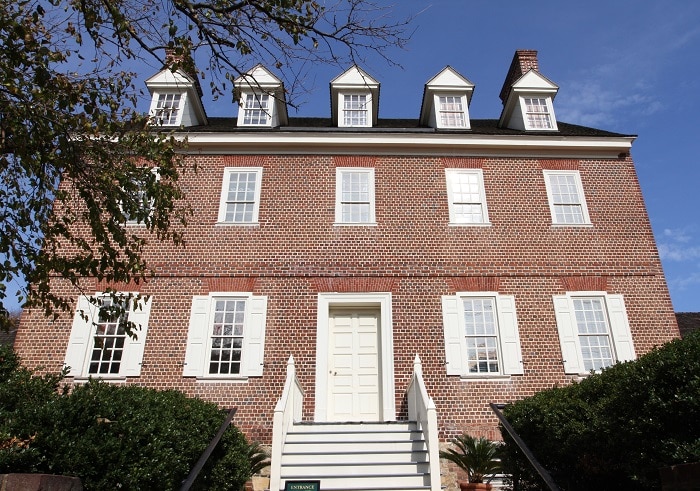
-
Preservation 4 1
A National Jewel of Preservation
The Chesapeake Crossroads Heritage Area is home to eleven National Historic Landmarks and numerous historic sites, many of which are located in the downtown Colonial Annapolis Historic District. A significant number are open to the public and include tours and/or educational programs, lectures, and events. Here’s a list of these great landmarks to help plan your visit:
- Charles Carroll House: The birthplace and home of the only Roman Catholic signer of the Declaration of Independence. The property remains one of the very few essentially intact 18th-century sites in the Annapolis Historical District, with waterfront gardens along Spa Creek. Open to the public. 107 Duke of Gloucester St (behind St. Mary’s Church)
- Chase-Lloyd House: The three-story residence displays intricately molded and carved woodwork in all its major rooms. Its most dramatic feature is the central stair hall, with a cantilevered stair framing a large Palladian window that overlooks the rear garden. Open to the public. Call (410) 263-2723 for tour information. 22 Maryland Avenue, Annapolis.
- Hammond-Harwood House: Designed for Matthias Hammond in 1774 by William Buckland, the Hammond-Harwood House is noted as one of the finest classical designs in America and is furnished with a significant decorative art collection. Its entrance has been described as the most beautiful doorway in America. Open to the public. Call (410) 263-4683 for tour information. 19 Maryland Avenue, Annapolis.
- Historic London Town and Gardens: The property includes important archaeological sites predating the arrival of Europeans (artifacts and stories on display in the Visitor Center), rebuilt 18th-century buildings, and the William Brown House (1758–1764), as well as extensive gardens. Open to the public. Call (410) 222-1919 for guided, school, and group tours and events. 839 Londontown Road, Edgewater.
- James Brice House: A superb example of the Maryland five-part plan, the Brice House is one of the largest and most elegant of Annapolis’ historic mansions. Highlights of the central block include a magnificent mahogany staircase and the lavishly decorated drawing room. Undergoing restoration. 42 East Street, Annapolis.
- Maryland State House: As the oldest State House in America (1772–1779) still in continuous legislative use, this is a must-visit site. Congress met in the State House from November 1783 to August 1784, during which time George Washington resigned as Commander in Chief of the Continental Army and Congress ratified the Treaty of Paris, making Annapolis the new nation’s first peacetime capital. Open to the public. Call (41) 974-3400 for tour information. 91 State Circle, Annapolis.
- Peggy Stewart House: Associated with the 1774 burning of Anthony Stewart’s ship, the Peggy Stewart, in response to a violation of the Non-Importation Act—Annapolis’ version of Boston’s Tea Party. It was for a time the home of Thomas Stone, one of Maryland’s four signers of the Declaration of Independence. Private. 207 Hanover Street, Annapolis.
- Thomas Point Shoal Lighthouse: The Chesapeake Bay’s only remaining 19th-century screwpile lighthouse and a cherished piece of Maryland history. Call the Annapolis Maritime Museum at (410) 268-1802 for information on visiting the lighthouse.
- Tulip Hill: A plantation house built between 1762 and 1790 by Samuel Galloway, considered a superb example of 18th-century Georgian architecture. Private. Muddy Creek Road, Galesville.
- United States Naval Academy: Founded in 1845, the Academy grounds contain numerous attractions, including the world-class USNA Museum in Preble Hall, the Bancroft Hall complex, the crypt of John Paul Jones, and the Chapel, with its Tiffany windows, as well as many events that take place throughout the year. The Academy is open to the public free of charge, with tours available at the Armel-Leftwich Visitor Center. A valid picture ID is required for admission; anyone under the age of 21 without such an ID must be accompanied by an adult with a valid ID. 118 Maryland Avenue, Annapolis.
- William Paca House and Garden: Completed in 1765, the house was built by William Paca, one of Annapolis’ four signers of the Declaration of Independence. The elegant house and garden have been restored to their original grandeur. The property is now operated by Historic Annapolis. Open to the public. Call (410) 990-4543 for tour information. 186 Prince George Street, Annapolis.
Experience the Area
With the support of our local partners and associations, Chesapeake Crossroads is dedicated to preserving the landmarks, stories, cultures, and histories of the area’s inhabitants. If you are interested in experiencing the area’s rich history for yourself, you can plan a visit to one of our partner sites, look into a local tour, attend a local seminar or lecture series, or join us for one of many monthly events in the region.
If you’re looking for a peek into the preservation of the region, there’s no shortage of opportunities in Anne Arundel County and the Chesapeake Crossroads Heritage Area. Click here to discover all the attractions and organizations that help to preserve the beauty and history of the area.






